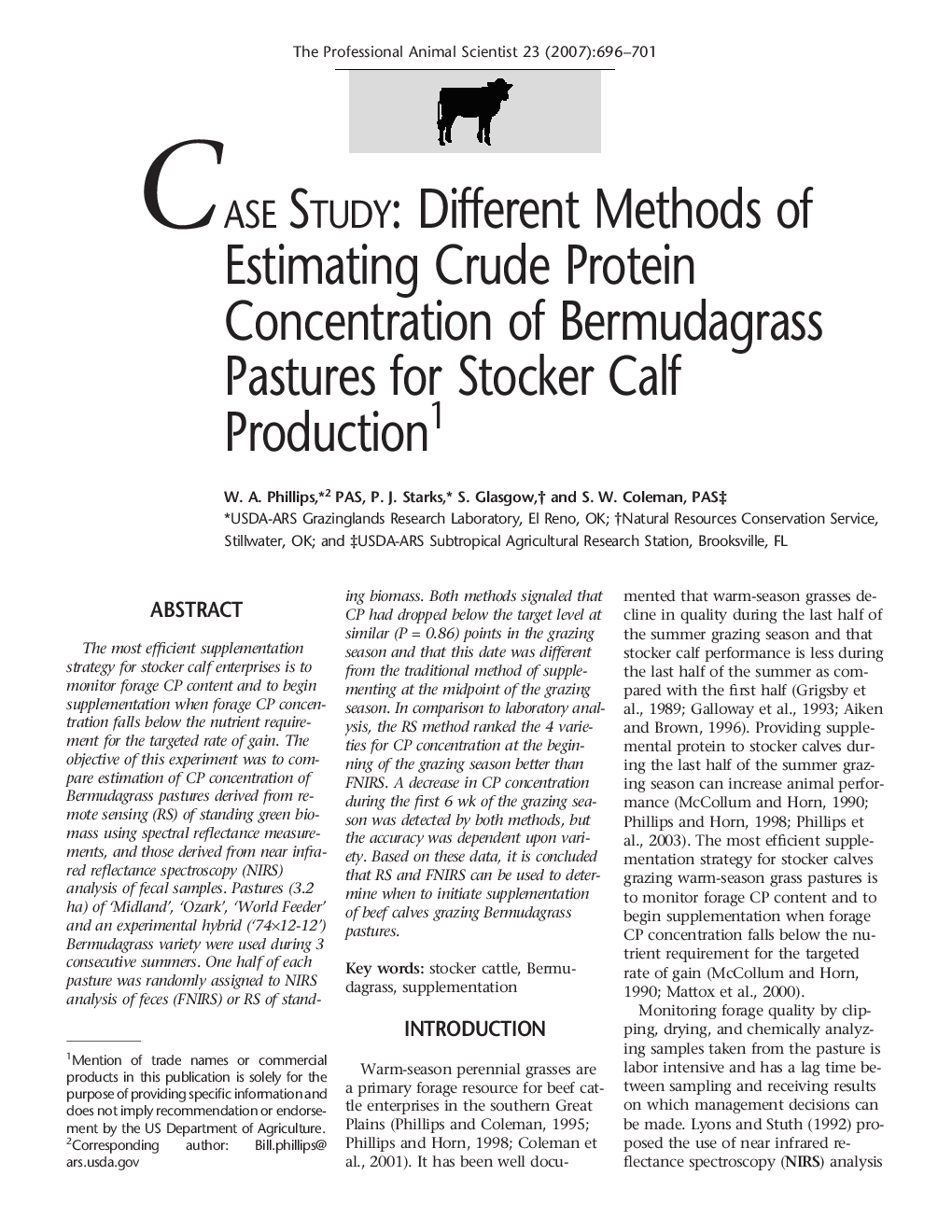| Article ID | Journal | Published Year | Pages | File Type |
|---|---|---|---|---|
| 2454168 | The Professional Animal Scientist | 2007 | 6 Pages |
Abstract
The most efficient supplementation strategy for stocker calf enterprises is to monitor forage CP content and to begin supplementation when forage CP concentration falls below the nutrient requirement for the targeted rate of gain. The objective of this experiment was to compare estimation of CP concentration of Bermudagrass pastures derived from remote sensing (RS) of standing green biomass using spectral reflectance measurements, and those derived from near infrared reflectance spectroscopy (NIRS) analysis of fecal samples. Pastures (3.2 ha) of 'Midland', 'Ozark', 'World Feeder' and an experimental hybrid ('74-12-12') Bermudagrass variety were used during 3 consecutive summers. One half of each pasture was randomly assigned to NIRS analysis of feces (FNIRS) or RS of standing biomass. Both methods signaled that CP had dropped below the target level at similar (P = 0.86) points in the grazing season and that this date was different from the traditional method of supplementing at the midpoint of the grazing season. In comparison to laboratory analysis, the RS method ranked the 4 varieties for CP concentration at the beginning of the grazing season better than FNIRS. A decrease in CP concentration during the ?rst 6 wk of the grazing season was detected by both methods, but the accuracy was dependent upon variety. Based on these data, it is concluded that RS and FNIRS can be used to determine when to initiate supplementation of beef calves grazing Bermudagrass pastures.
Related Topics
Life Sciences
Agricultural and Biological Sciences
Animal Science and Zoology
Authors
W.A. Pas, P.J. Starks, S. Glasgow, S.W. Coleman,
